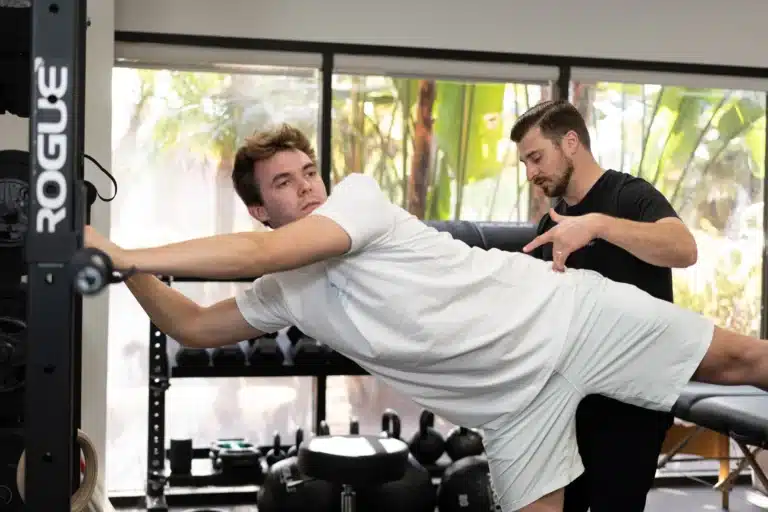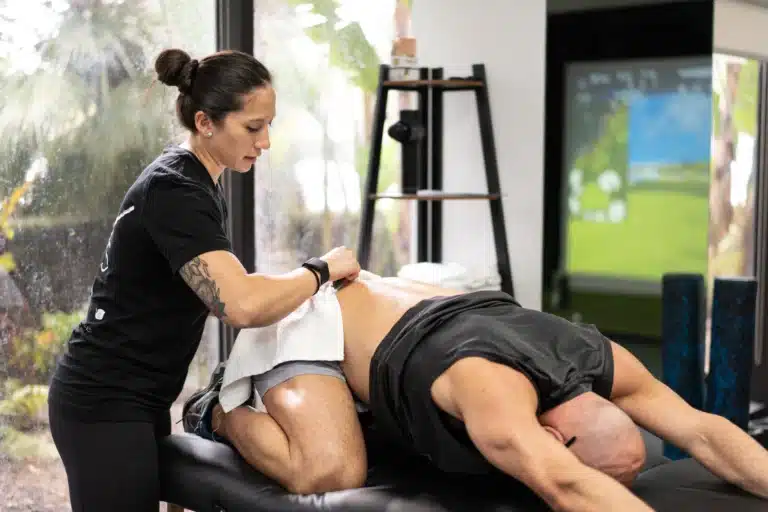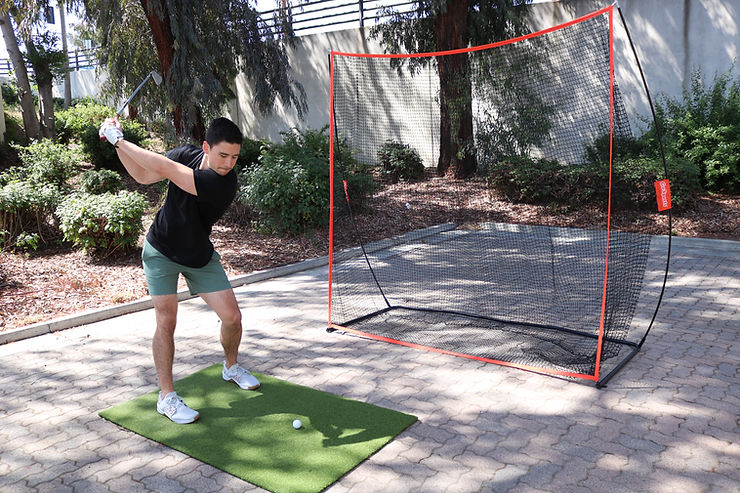Introduction
Hip pain in athletes is a common complaint among professional sports players and can significantly impact performance and quality of life. The hip joint’s complex anatomy and its fundamental role in movement make it susceptible to a variety of injuries and conditions. These can range from acute trauma such as muscle strains and labral tears to chronic conditions like trochanteric bursitis and femoral neck stress fractures. Understanding the causes and symptoms of hip pain is crucial for timely and effective treatment.
Overview of hip pain in athletes
Hip pain in athletes is a significant issue that can arise from various conditions and injuries affecting the hip joint and surrounding structures. Sports that involve repetitive movements, impact, or high levels of physical exertion are especially prone to causing hip-related concerns. Proper diagnosis is essential, as athlete hip pain can stem from soft tissue injuries, joint problems, or issues with fluid-filled sacs called bursae that cushion the bones.
Anatomy of the hip
The hip is a robust and complex joint designed to support the body’s weight while providing a vast range of motion. Central to its function are several key structures:
- Hip Joints: The ball-and-socket configuration, where the ball of the femoral neck fits into the hip socket (acetabulum) of the pelvic bone.
- Labrum: This ring of cartilage surrounds the hip socket, aiding in stability and motion.
- Bursae: Fluid-filled sacs that reduce friction and cushion the areas where muscles and tendons glide across the bone.
- Muscles and Tendons: These soft tissues are vital for movement and support. The iliotibial band is a notable tendon that extends down the thigh.
- Bone: The pelvic bone and femur (thigh bone) are the primary bones making up the hip structure.
Understanding the anatomy of the hip is essential in assessing hip pain causes and determining appropriate treatment methods for athletes experiencing hip-related issues.
Common causes of hip pain in athletes
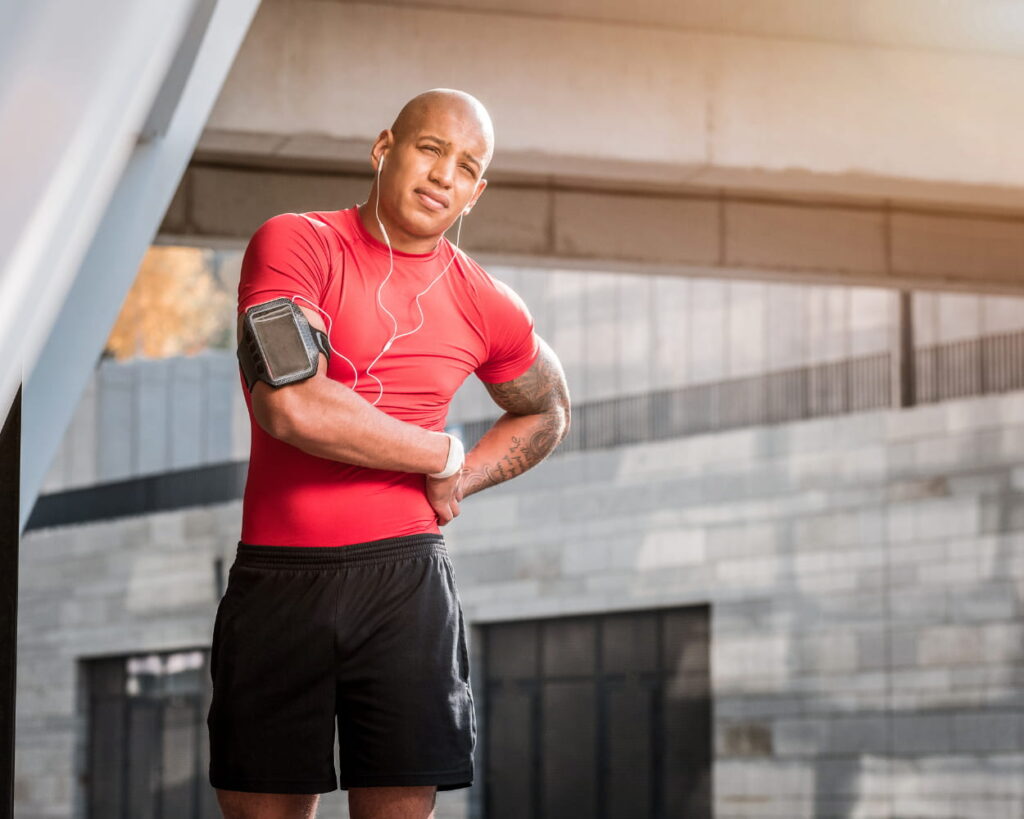
In athletes, hip pain is frequently attributed to a range of common conditions, each associated with various symptoms and causes.
- Muscle Strains: Overuse or acute injury can stretch or tear the muscles around the hip joints, leading to pain and limited movement.
- Tendinitis and Bursitis: Repetitive motions can inflame tendons (tendinitis) or bursae (hip bursitis). This results in pain and swelling.
- Labral Tears: The labrum’s rip or detachment within the hip socket interrupts joint stability, causing sharp pain and stiffness.
- Femoroacetabular Impingement (FAI): Abnormal friction between the femoral neck and the hip socket, leading to pain and limited range of motion.
- Stress Fractures: Common in high-impact sports, these can induce groin pain emanating from the femoral neck or pelvic bone areas.
- Osteoarthritis: This degenerative disease involves the wear and tear of hip joints, resulting in chronic hip pain.
- Snapping Hip Syndrome: Characterized by a snapping sensation, often related to tight muscles or tendons over the outer hip or pelvis.
- Hip Dysplasia: A misaligned or shallow hip socket that can cause pain and mobility issues.
- Sports Hernia: A tear or strain in the lower abdomen or groin area often confused with hip problems.
- Sacroiliac Joint Dysfunction: Pain originating from the joint connecting the spine to the pelvis, often mistaken for hip pain.
Assessment and Diagnosis of hip pain in athletes
When athletes experience hip pain, it is crucial to conduct a thorough assessment and diagnosis to determine the underlying cause and provide appropriate treatment, focusing on athlete pain relief methods. Hip pain in athletes, particularly those seeking information on how to treat hip pain from running, can be a complex issue, but with a systematic approach to history taking and physical examination, healthcare professionals can identify the etiology more effectively.
Several factors should be considered during the assessment process. These include age, skeletal maturity, sex, systemic symptoms, gastrointestinal complaints, genitourinary symptoms, back pain, and neurologic complaints. Gathering a comprehensive medical history can provide valuable clues and help guide the diagnostic process. For example, a history of multiple joint involvement may indicate a possible autoimmune etiology.
In addition to the medical history, a detailed physical examination is essential. Evaluating pain patterns and identifying provocative and alleviating factors can provide valuable information about the source of hip pain. Special attention should be given to assessing range of motion, muscle strength, and joint stability. Imaging studies such as X-rays, MRI scans, and ultrasound may be necessary to further evaluate the hip joint and surrounding structures.
Clinical Evaluation and History-Taking
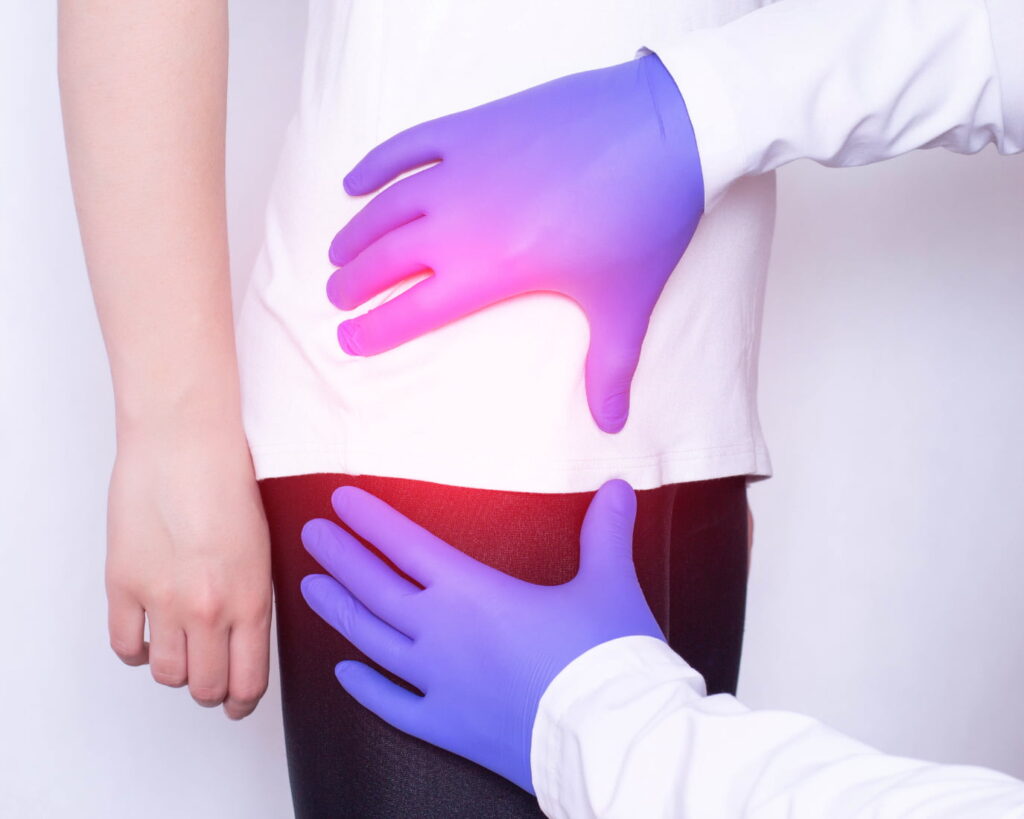
When evaluating a patient with hip pain, a thorough clinical evaluation and history taking are crucial to accurately diagnose and treat the underlying condition. This section will discuss the presenting symptoms, history of injury, activity history, and medical history that should be considered during the evaluation process.
Presenting Symptoms: Patients with trochanteric bursitis may experience warmth and reported pain at the greater trochanter region of the hip. Other symptoms may include pain with hip abduction resistance, palpable tenderness at the lateral hip, pain with gait, and possible swelling or ecchymosis at the surface of the greater trochanter. It is also important to assess if the patient experiences pain when lying on the affected side.
History of Injury: Taking a detailed history of injury is crucial in understanding the mechanism of hip pain. Inquiries should be made regarding the location, radiation, and duration of the pain, as well as exacerbating and relieving factors. Patients should be asked to point to the area of maximum pain with one finger to ensure a more specific description. Previous injuries in the lower extremities, both ipsilateral and contralateral, should also be explored as they can contribute to hip pathology.
Activity History: Understanding the patient’s activity level and training regimen is essential in assessing the impact of physical activities on the hip. Patients should be asked about their activity level, any recent changes in activity, or participation in sports or exercises that involve force and extremes of movement across the hip. Analyzing gait and stair patterns, as well as possibly running mechanics, should be considered if subjective complaints warrant.
Medical History: Exploring the patient’s past medical and surgical history, use of medications, and menstrual and dietary history can provide valuable information in the evaluation of hip pain. It is important to consider any previous adaptations or deficits in the distal kinetic chain that may contribute to hip pathology. Additionally, low back injuries should be explored as they can masquerade as hip pain.
Physical Examination
A thorough physical examination for hip pathology encompasses inspection, palpation, range of motion tests, strength testing, and special tests.
Inspection focuses on the patient’s gait and posture, looking for abnormalities like genu recurvatum, knee flexion contracture, foot overpronation, hip flexion contracture, and leg length discrepancies, which indicate biomechanical imbalances. Palpation is crucial for finding tender areas and assessing the state of the hip joint’s muscles, tendons, and ligaments, with specific attention to the greater trochanter for conditions like trochanteric bursitis or gluteal tendonitis.
Range of motion tests evaluate the hip’s flexibility and mobility through motions such as flexion, extension, abduction, adduction, and rotations, with any limitations or pain suggesting dysfunction. Strength testing measures the muscle power around the hip, identifying weaknesses or imbalances.
Special tests, like the Thomas, Ober, and Trendelenburg tests, diagnose specific pathologies such as hip flexor tightness, iliotibial band syndrome, and hip abductor weakness.
These examination components are integral for diagnosing, understanding the severity, and treating hip pathology by addressing biomechanical factors and guiding treatment plans.
Rehabilitation Techniques for hip pain in athletes
When it comes to managing and treating hip pain in athletes, rehabilitation techniques play a crucial role in the recovery process. Whether the hip pain is caused by overuse, injury, or inflammation, implementing an effective rehabilitation program can help athletes get back in the game and prevent further damage to the hip joint.
Physical Therapy: A specialized program developed by a physical therapist tailors exercises to the athlete’s specific condition to encourage recovery and prevent re-injury.
Stretching Exercises: Essential to maintain the range of motion in the hip joints and alleviate tension in muscle groups surrounding the hip.
Strengthening Exercises: Targeting muscles in and around the pelvis and hip can stabilize the hip joint, with focus often on the gluteus maximus, medius, and minimus.
Core Stability Exercises: Foundational exercises to enhance the support provided by abdominal and lower back muscles to the pelvic bone, impacting overall hip health.
Balance Training: Improving proprioception and stability of the hip joint, particularly important after soft tissue injuries.
Modalities: Incorporating treatments such as ice, heat, ultrasound, or electrical stimulation can reduce pain and inflammation.
Activity Modification: Temporary adjustments in training intensity, duration, or technique to allow healing while maintaining physical fitness.
By integrating these techniques into an athlete training and health rehabilitation strategy, athletes have a structured approach to effectively manage and overcome hip pain.
Prevention
Good practices can significantly reduce the risk of hip injuries and chronic pain:
- Proper Warm-Up and Cool-Down: Begin with dynamic stretches to increase circulation, and conclude with static stretches to enhance flexibility.
- Strength Training and Conditioning: Reinforce the muscles supporting the hip joint to prevent overuse and injury.
- Flexibility and Mobility Exercises: Promote a full range of motion, keeping the hip joints and muscles limber and less prone to strains.
- Proper Technique and Form: Use correct movements during physical activity to minimize stress on the hip joints.
- Adequate Rest and Recovery: Allow muscle and soft tissue recovery to prevent overtraining syndrome.
- Nutrition and Hydration: Optimal fuel and fluids are essential for tissue repair and overall health.
- Listening to the Body: Heed warning signs like sharp pain and muscle spasms to avert exacerbation of minor concerns.
- Regular Physical Therapy or Massage: Maintain muscle balance and address minor issues before they become serious.
- Cross-Training: Vary your workout to evenly distribute physical stress and avoid repeating the same strain. Integrating these elements into a training regimen is paramount for athletes aiming to sidestep hip-related injuries.
The Movement Schopp: A Premier Choice for Rehabilitation Techniques for Hip Pain in Athletes
The Movement Schopp stands out for its tailored approach to rehabilitating athletes suffering from hip pain. Our expert team focuses on precise physical examinations to ensure a differential diagnosis, whether you’re dealing with a labral tear, trochanteric bursitis, or a femoral neck stress fracture.
Key Rehabilitation Services:
- Physical Therapy: Incorporating exercises to fortify the hip joint and improve the range of motion.
- Activity Modification: Advising on alternative movements to reduce stress while maintaining physical activity levels.
- Targeted Treatments: For specific conditions like hip bursitis and soft tissue injuries, ensuring focused recovery.
Facility Features:
- State-of-the-art equipment: Facilitates effective rehab programs.
- Experienced therapists: Knowledgeable about common hip injuries, ensuring a personalized recovery plan.
- Support for athletes: Including those with previous injuries seeking to regain peak performance.
For athletes facing hip pain from muscle strains to chronic conditions, The Movement Schopp is a leading choice for your pain and movement solutions to help restore hip function and return to the sport.
Conclusion
It is vital to know the importance of proper treatment for soft tissue injuries of the hip. It emphasizes the need for a thorough evaluation of the entire kinetic chain, as there are often overlapping conditions around the hip joint that make it challenging to identify the primary cause of hip pain and dysfunction.
Once a diagnosis has been made, a patient should follow an evidence-based, step-by-step progression for treatment. This approach ensures that athletes receive the appropriate interventions and therapies to address their specific hip injuries.
FAQs
How do you stay active with hip pain?
Managing hip pain while remaining active involves a careful balance between engaging in physical activity and listening to your body’s signals to avoid exacerbating the condition. Strategies include participating in low-impact exercises like swimming, water aerobics, and cycling, which maintain fitness without straining the hips. Strengthening exercises tailored by a professional can improve support around the joint while stretching enhances flexibility and reduces stiffness.
What exercises should you avoid with hip arthritis?
For individuals with hip arthritis, managing exercise routines is essential to avoid exacerbating symptoms or causing further joint damage. High-impact activities like running, basketball, and intense dance should be avoided, as well as exercises that deeply flex the hips, such as deep squats and lunges.
Leg presses with heavy weights and overhead exercises can also strain the hip joint and should be substituted with lower-impact exercises targeting the hip muscles without excessive stress, like hip abductions or extensions. High-intensity interval training (HIIT) may need to be replaced with gentler forms of cardio like cycling or swimming.


